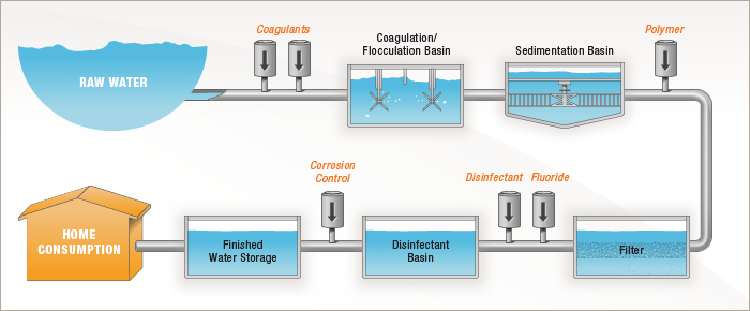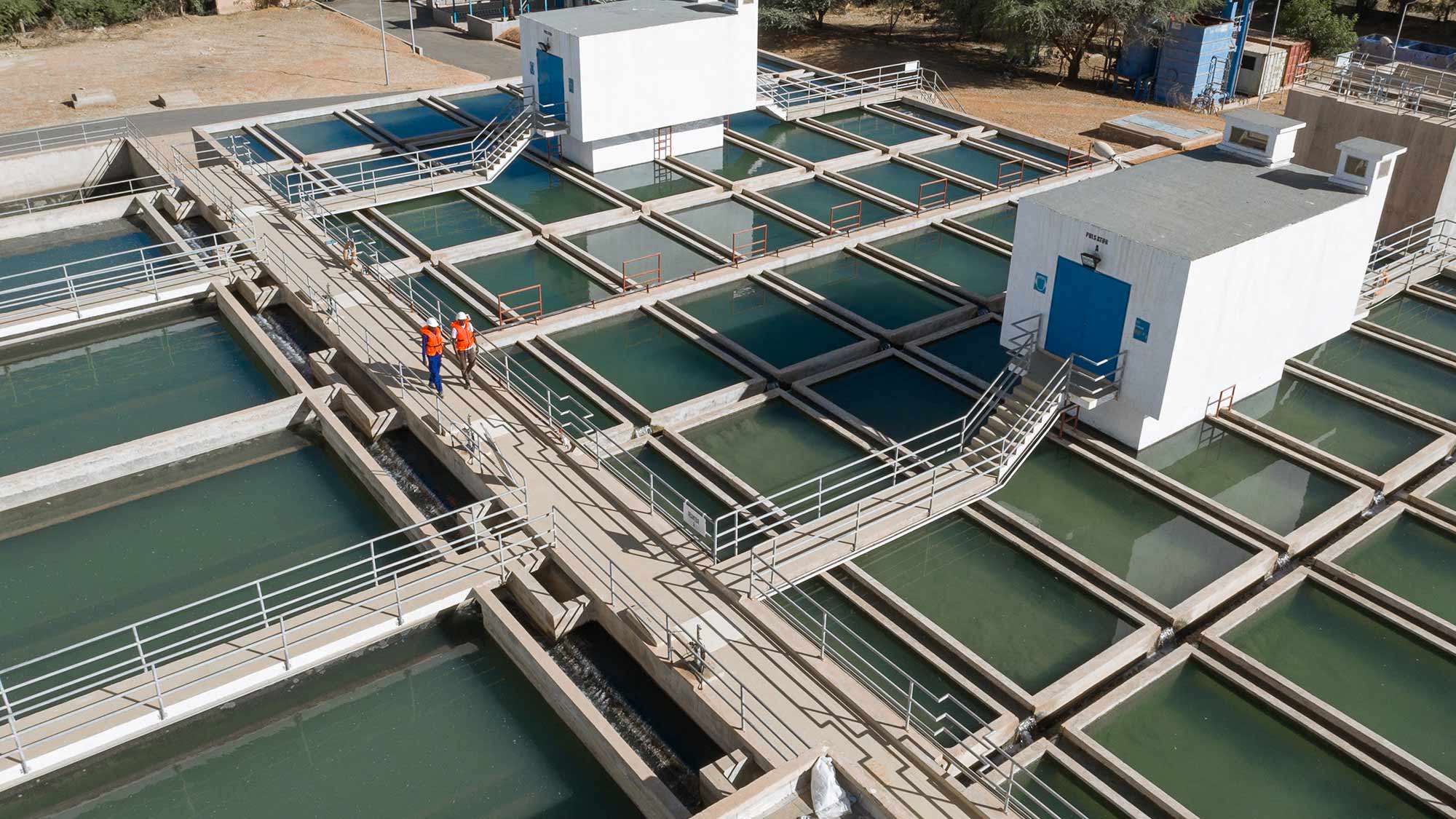Custom water treatment polymer formulations address unique industry needs.
Wiki Article
Check Out Just How Water Therapy Polymer Functions in Efficient Wastewater Treatment Systems
The combination of water treatment polymers right into wastewater therapy systems represents a significant improvement in boosting operational efficiency. Recognizing the details kinds of polymers and their applications can reveal much deeper understandings into enhancing treatment procedures.Summary of Water Treatment Polymers
The performance of wastewater administration hinges on the application of numerous treatment agents, amongst which water treatment polymers play a pivotal duty. These synthetic or all-natural polymers are created to enhance the performance of physical and chemical processes in wastewater treatment systems. Their key function is to facilitate the gathering of suspended fragments, ultimately boosting the general quality of treated water.Water therapy polymers can be classified right into several groups, including flocculants, coagulants, and dispersants. Flocculants, for example, promote the development of larger accumulations, or flocs, by bridging smaller sized fragments together. Coagulants counteract the fees of put on hold particles, permitting them to find with each other and work out better. Dispersants, on the various other hand, are employed to support particles in suspension, preventing them from agglomerating.
The application of these polymers not only improves the elimination of impurities but likewise optimizes the operational effectiveness of therapy plants. In addition, the selection of suitable water treatment polymers is critical, as their effectiveness can differ based upon factors such as water chemistry, temperature, and turbidity levels. Generally, water therapy polymers are crucial components in modern wastewater monitoring techniques, adding to cleaner water and sustainable environmental practices.
Systems of Coagulation and Flocculation
Coagulation and flocculation are basic procedures in wastewater treatment that personify the principles of bit communication and aggregation. These devices are crucial for removing put on hold solids, colloids, and various other impurities from water. Coagulation includes the destabilization of suspended fragments, commonly attained through the addition of coagulants such as steel salts. These coagulants reduce the effects of the electrostatic charges that maintain fragments apart, promoting first gathering.Complying with coagulation, flocculation occurs, identified by the gentle blending of water to motivate the development of larger accumulations, or flocs. During this phase, polymers play a considerable role by linking between fragments, enhancing the development of these larger accumulations. The physical and chemical interactions throughout flocculation lead to a boosted size and density of the fragments, facilitating their succeeding removal through sedimentation or filtration.
The performance of coagulation and flocculation processes is influenced by numerous elements, consisting of pH, temperature, and the nature of the pollutants existing. Recognizing these devices permits the optimization of wastewater therapy systems, causing improved elimination effectiveness and general water high quality. Consequently, the cautious selection and application of coagulants and flocculants are crucial for effective wastewater monitoring.
Sorts Of Water Therapy Polymers
Regularly utilized in wastewater therapy, water treatment polymers are necessary for boosting the efficiency of coagulation and flocculation processes. These polymers can be extensively classified right into 3 main types: anionic, cationic, and non-ionic.Anionic polymers, which lug a negative charge, are particularly efficient in treating wastewater with favorably billed pollutants. They promote the aggregation of suspended particles, promoting the formation of larger flocs that work out more easily. On the other hand, cationic polymers possess a favorable fee and are usually made use of in applications where adversely billed bits control, such as in specific industrial effluents. Their capability to reduce the effects of fees makes it possible for the efficient binding of fragments, leading to enhanced sedimentation rates.
Non-ionic polymers, doing not have a fee, function as versatile representatives that you could try this out can improve the performance of both anionic and cationic polymers. Their primary role involves increasing the thickness of the wastewater, consequently improving the overall retention time of the flocs in the therapy system.
Comprehending the distinct characteristics of these kinds of water therapy polymers enables the optimization of wastewater treatment procedures, eventually resulting in boosted removal performances and enhanced water high quality.
Applications in Wastewater Therapy

In metropolitan wastewater treatment plants, water treatment polymers assist lower the quantity of sludge generated during the treatment procedure. water treatment polymer. This decrease not only maximizes functional performance however additionally decreases disposal costs connected with sludge administration. In addition, polymers contribute in dealing with industrial effluents, where they help in the additional hints elimination of details pollutants such as heavy metals and natural pollutants, making certain conformity with ecological laws

Moreover, water therapy polymers are made use of in the improvement of biofiltration systems, where they enhance microbial task and general treatment effectiveness. Their function in membrane procedures, such as reverse osmosis, additionally can not be forgotten, as they add to membrane layer fouling control and prolong the life-span of purification systems. Via these varied applications, water treatment polymers are vital for achieving effective and sustainable wastewater administration.

Benefits of Making Use Of Polymers
Using water treatment polymers in wastewater systems supplies many benefits that significantly boost treatment effectiveness and overall functional efficiency. These polymers act as efficient coagulants and flocculants, promoting the gathering of suspended solids and promoting their removal. This process results in more clear effluent and lowers the problem on downstream treatment stages.In addition, polymers enhance the dewatering procedure by improving the sedimentation characteristics of sludge. This results in minimized quantity and weight of waste material, ultimately reducing disposal costs. Additionally, their ability to work throughout varying pH levels and temperature levels guarantees versatility in different wastewater settings.
Polymers also add to the stablizing of organic processes by offering nutrients and keeping optimum conditions for microbial growth - water treatment polymer. This strengthened microbial activity aids in the malfunction of raw material, enhancing general treatment effectiveness
In addition, using polymers can result in reduced chemical usage, decreasing functional prices and environmental impact. By optimizing the treatment process and enhancing sludge administration, water therapy polymers play a vital duty in advertising here are the findings lasting wastewater monitoring techniques, straightening with regulatory standards and environmental objectives.
Conclusion
In conclusion, water treatment polymers are essential for enhancing the performance of wastewater treatment systems. Their ability to promote coagulation and flocculation processes leads to improved sedimentation and reduced sludge quantity, consequently optimizing therapy performance.Report this wiki page